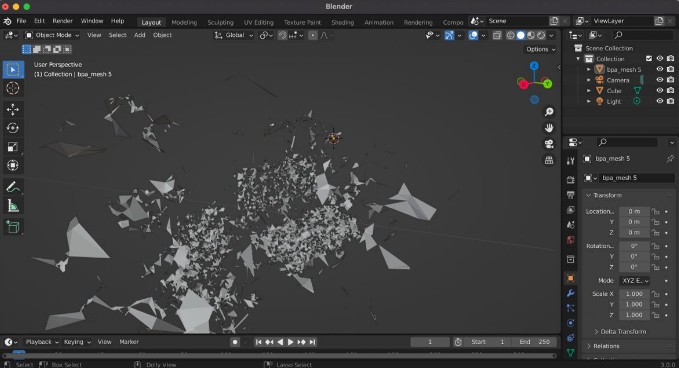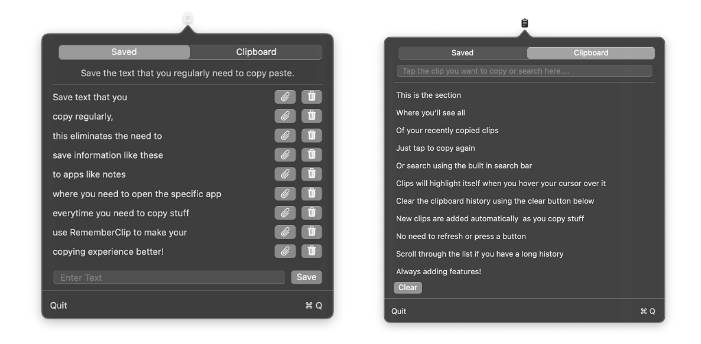A new approach to Container-Based Dependency Injection for Swift and SwiftUI.
Why do something new?
Resolver was my first Dependency Injection system. While quite powerful and still in use in many of my applications, it suffers from a few drawbacks.
- Resolver requires pre-registration of all service factories up front.
- Resolver uses type inference to dynamically find and return registered services in a container.
While the first issue could lead to a performance hit on application launch, in practice the registration process is usually quick and not normally noticable. No, it’s the second item that’s somewhat more problematic.
Failure to find a matching type could lead to an application crash if we attempt to resolve a given type and if a matching registration is not found. In real life that isn’t really a problem as such a thing tends to be noticed and fixed rather quickly the very first time you run a unit test or when you run the application to see if your newest feature works.
But… could we do better? That question lead me on a quest for compile-time type safety. Several other systems have attempted to solve this, but I didn’t want to have to add a source code scanning and generation step to my build process, nor did I want to give up a lot of the control and flexibility inherent in a run-time-based system.
Could I have my cake and eat it too?
Features
Factory is strongly influenced by SwiftUI, and in my opinion is highly suited for use in that environment. Factory is…
- Safe: Factory is compile-time safe; a factory for a given type must exist or the code simply will not compile.
- Flexible: It’s easy to override dependencies at runtime and for use in SwiftUI Previews.
- Powerful: Like Resolver, Factory supports application, cached, shared, and custom scopes, customer containers, arguments, decorators, and more.
- Lightweight: With all of that Factory is slim and trim, coming in at about 200 lines of code.
- Performant: Little to no setup time is needed for the vast majority of your services, resolutions are extremely fast, and no compile-time scripts or build phases are needed.
- Concise: Defining a registration usually takes just a single line of code.
Sound too good to be true? Let’s take a look.
A simple example
Most container-based dependency injection systems require you to define in some way that a given service type is available for injection and many reqire some sort of factory or mechanism that will provide a new instance of the service when needed.
Factory is no exception. Here’s a simple dependency registraion.
extension Container {
static let myService = Factory<MyServiceType> { MyService() }
}
Unlike Resolver which often requires defining a plethora of registration functions, or SwiftUI, where defining a new environment variable requires creating a new EnvironmentKey and adding additional getters and setters, here we simply add a new Factory to the default container. When called, the factory closure is evaluated and returns an instance of our dependency. That’s it.
Injecting and using the service where needed is equally straightforward. Here’s one way to do it.
class ContentViewModel: ObservableObject {
@Injected(Container.myService) private var myService
...
}
Here our view model uses an @Injected property wrapper to request the desired dependency. Similar to @EnvironmentObject in SwiftUI, we provide the property wrapper with a reference to a factory of the desired type and it handles the rest.
And that’s the core mechanism. In order to use the property wrapper you must define a factory. That factory that must return the desired type. Fail to do either one and the code will simply not compile. As such, Factory is compile-time safe.
Factory
A Factory is a lightweight struct that manages a given dependency. And due to the lazy nature of static variables, a factory isn’t instantiated until it’s referenced for the first time.
When a factory is evaluated it provides an instance of the desired dependency. As such, it’s also possible to bypass the property wrapper and call the factory directly.
class ContentViewModel: ObservableObject {
// dependencies
private let myService = Container.myService()
private let eventLogger = Container.eventLogger()
...
}
You can use the container directly or the property wrapper if you prefer, but either way I’d suggest grouping all of a given object’s dependencies in a single place and marking them as private.
Mocking and Testing
Examining the above code, one might wonder why we’ve gone to all of this trouble? Why not simply say let myService = MyService() and be done with it?
Well, the primary benefit one gains from using a container-based dependency injection system is that we’re able to change the behavior of the system as needed. Consider the following code:
struct ContentView: View {
@StateObject var model = ContentViewModel1()
var body: some View {
Text(model.text())
.padding()
}
}
Our ContentView uses our view model, which is assigned to a StateObject. Great. But now we want to preview our code. How do we change the behavior of ContentViewModel so that its MyService dependency isn’t making live API calls during development?
It’s easy. Just replace MyService with a mock.
struct ContentView_Previews: PreviewProvider {
static var previews: some View {
let _ = Container.myService.register { MockService2() }
ContentView()
}
}
Note the line in our preview code where we’re gone back to our container and registered a new factory closure. One that provides a mock service that also conforms to MyServiceType.
Now when our preview is displayed ContentView creates a ContentViewModel which in turn depends on myService using the Injected property wrapper. But when the factory is asked for an instance of MyServiceType it now returns a MockService2 instance instead of the MyService instance originally defined.
If we have several mocks that we use all of the time, was can also add a setup function to the container to make this easier.
extension Container {
static func setupMocks() {
myService.register { MockServiceN(4) }
sharedService.register { MockService2() }
}
}
struct ContentView_Previews: PreviewProvider {
static var previews: some View {
let _ = Container.setupMocks()
ContentView()
}
}
This is a powerful concept that lets us reach deep into a chain of dependencies and alter the behavior of a system as needed.
But Factory has a few more tricks up it’s sleeve.
Scope
If you’ve used Resolver or some other dependency injection system before then you’ve probably experienced the benefits and power of scopes.
And if not, the concept is easy to understand: Just how long should an instance of an object live?
You’ve no doubt created a singleton in your apps at some point in your career. This is an example of a scope. A single instance is created and used and shared by all of methods and functions in the app.
This can be done in Factory simply by adding a scope attribute.
extension Container {
static let myService = Factory<MyServiceType>(scope: .singleton) { MyService() }
}
Now whenever someone requests an instance of myService they’ll get the same instance of the object as everyone else.
Unless altered, the default scope is unique; every time the factory is asked for an instance of an object it will get a new instance of that object.
Other common scopes are cached and shared. Cached items are saved until the cache is reset, while shared items persist just as long as someone holds a strong reference to them. When the last reference goes away, the weakly held shared reference also goes away.
You can also add your own special purpose scopes to the mix.
extension Container.Scope {
static var session = Cached()
}
extension Container {
static let authentication = Factory(scope: .session) { Authentication() }
}
Once created, a single instance of Authentication be provided to anyone that needs one… up until the point where the session scope is reset, perhaps by a user logging out.
func logout() {
Container.Scope.session.reset()
...
}
Scopes are powerful tools to have in your arsenal. Use them.
Constructor Injection
At times we might prefer (or need) to use a technique known as constructor injection where dependencies are provided to an object upon initialization.
That’s easy to do in Factory. Here we have a service that depends on an instance of MyServiceType, which we defined earlier.
class Container {
static let constructedService = Factory { MyConstructedService(service: myService()) }
}
All of the factories in a container are visible to other factories in a container. Just call the needed factory as a function and the dependency will be provided.
Custom Containers
In a large project you might want to segregate factories into additional, smaller containers.
class OrderContainer: SharedContainer {
static let optionalService = Factory<SimpleService?> { nil }
static let constructedService = Factory { MyConstructedService(service: myServiceType()) }
static let additionalService = Factory(scope: .session) { SimpleService() }
}
Just define a new container derived from SharedContainer and add your factories there. You can have as many as you wish, and even derive other containers from your own.
While a container tree makes dependency resolutions easier, don’t forget that if need be you can reach across containers simply by specifying the full container.factory path.
class PaymentsContainer: SharedContainer {
static let anotherService = Factory { AnotherService(OrderContainer.optionalService()) }
}
SharedContainer
Note that you can also add your own factories to SharedContainer. Anything added there will be visible on every container in the system.
extension SharedContainer {
static let api = Factory<APIServiceType> { APIService() }
}
Unit Tests
Factory also has some provisions added to make unit testing eaiser. In your unit test setUp function you can push the current state of the registration system and then register and test anything you want.
Then in your tearDown function simply pop your changes to restore everything back to the way it was prior to running that test suite.
final class FactoryCoreTests: XCTestCase {
override func setUp() {
super.setUp()
Container.Registrations.push()
}
override func tearDown() {
super.tearDown()
Container.Registrations.pop()
}
...
}
Installation
Factory is available as a Swift Package. Just add it to your projects.
License
Factory is available under the MIT license. See the LICENSE file for more info.
Author
Factory was designed, implemented, documented, and maintained by Michael Long, a Senior Lead iOS engineer at CRi Solutions. CRi is a leader in developing cutting edge iOS, Android, and mobile web applications and solutions for our corporate and financial clients.
- Email: [email protected]
- Twitter: @hmlco
He was also one of Google’s Open Source Peer Reward winners in 2021 for his work on Resolver.
Additional Resources
- Resolver: A Swift Dependency Injection System
- Inversion of Control Design Pattern ~ Wikipedia
- Inversion of Control Containers and the Dependency Injection pattern ~ Martin Fowler
- Nuts and Bolts of Dependency Injection in Swift
- Dependency Injection in Swift
- Swift 5.1 Takes Dependency Injection to the Next Level





